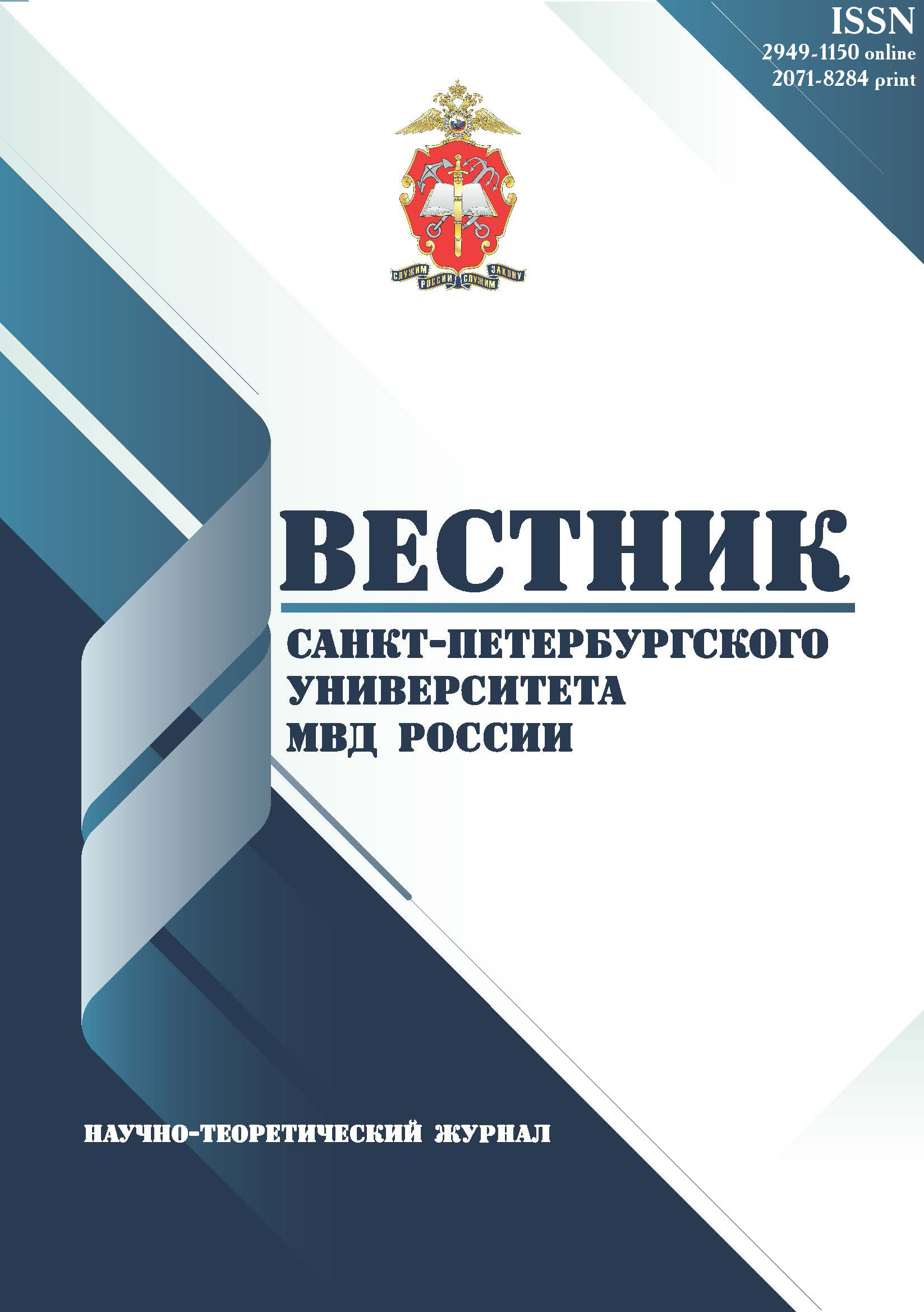Sankt-Peterburg, Russian Federation
St. Petersburg, St. Petersburg, Russian Federation
UDC 15
CSCSTI 15.01
The article discusses theoretical basis for study of representations of persons who have committed lucrative crimes. The role of representations in regulation of social behavior is described, theoretical information and facts confirming the role of representations in regulation of criminal behavior are given. Opinions are generalised as to the specifics of the perceptions of persons who have committed mercenary crimes and corruption. Theories of «planned behavior» and «criminal thinking» in relation to the assessment of criminal perceptions are discussed. Hypotheses of empirical study of representations are defined, its procedure, methodology and methods applied are described. The sample of the survey comprises 211 former law enforcement officers convicted of lucrative and corruption crimes. The results are given taking into account the statistical assessment of differences in perceptions of impunity, victim depreciation and hedonistic attitudes. The results support the hypothesis that there are differences in perceptions between the groups to be compared, as well as differences in the relationship of these perceptions among former law enforcement officers. It is assumed that the measured perceptions influence the decision to commit a lucrative crime by encouraging a belief in impunity and victim acceptance. The conclusion is that it is promising to study perceptions as an indicator of the risk of acquisitive crime.
regulation of social behavior, perceptions of criminals, criminal thinking, impunity, mercenary crimes, corruption
1. Antonyan Yu. M., Enikeev M. I., Eminov V. E. Psihologiya prestupnika i rassledovaniya prestupleniy. - Moskva: Yurist', 1996. - 336 c.
2. Bobneva M. I. Social'nye normy i regulyaciya povedeniya / Psihologicheskie problemy social'noy regulyacii povedeniya / otv. red. E. V. Shorohova, M. I. Bobneva. - Moskva: Nauka, 1976. - S. 144-172.
3. Borisova S. E. Psihologicheskie osobennosti lic, sovershivshih moshennichestvo, i ih uchet pri rassledovanii prestupleniy // Prikladnaya yuridicheskaya psihologiya. - 2008. - № 1. - S. 108-113.
4. Efremova G. H., Ratinov A. R. Pravosoznanie i prestupnoe povedenie / Pravosoznanie i pravovoe vospitanie osuzhdennyh : sbornik nauchnyh trudov. - Moskva: Izd-vo Vsesoyuznogo instituta po izucheniyu prichin i razrabotke mer preduprezhdeniya prestupnosti, 1982. - S. 23-33.
5. Zlokazov K. V. Stili kriminal'nogo myshleniya kak diagnosticheskiy konstrukt // Vestnik Ural'skogo yuridicheskogo instituta MVD Rossii. - 2014. - № 1. - S. 76-80.
6. Morosanova V. I., Aronova E. A. Samoregulyaciya i samosoznanie sub'ekta // Psihologicheskiy zhurnal. - 2008. - T.2. - № 1. - C.14-22.
7. Bolger M., Eck J. Situational Choice and Crime Events. // Journal of Contemporary Criminal Justice. - 2014. - № 31. - P. 12-29. - DOI:https://doi.org/10.1177/1043986214552605.
8. Jacoby J. E., Yochelson, S., Samenow, S. E. The Criminal Personality. - Vol. 1: Profile for Change // The Journal of Criminal Law and Criminology. - 1977. - № 68 (2). - 314 p. DOI:https://doi.org/10.2307/1142854
9. Knight K., Garner B., Simpson D., Morey J., Flynn P. An assessment of criminal thinking // Crime and Delinquency. - 2006. - № 52(91). - P. 159-177. - DOI:https://doi.org/10.1177/0011128705281749.
10. Lloyd C., Serin R. Agency and outcome expectancies for crime desistance: Measuring offenders’ personal beliefs about change // Psychology, Crime, & Law. - 2012. - № 18 (6). - P. 543-565. - DOI:https://doi.org/10.1080/1068316X.2010.511221.
11. Palmer E. J., Hollin C. R. Predicting reconviction using the Psychological Inventory of Criminal Thinking Styles with English prisoners // Legal and Criminological Psychology. - 2004. - № 9. - P. 57-68. - DOI:https://doi.org/10.1348/135532504322776852.
12. Walters G. The psychological inventory of criminal thinking styles: Part I: Reliability and preliminary validity // Criminal Justice and Behavior. - 1995. - № 22 (3). - P. 307- 325. - DOI:https://doi.org/10.1177/0093854895022003008.
















